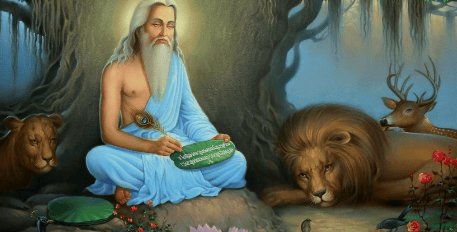CLAT PG Exam > CLAT PG Notes > Family Law > Sources of Hindu Law
Sources of Hindu Law | Family Law - CLAT PG PDF Download
| Table of contents |

|
| Ancient Sources |

|
| Modern Sources of Hindu Law |

|
| Legislations |

|
| Precedents |

|
The phrase "source of law" has several connotations.
- It may be the authority which issues rules of conduct which are recognized by Courts as binding.
- In this context, "source of law" means "the maker of law."
- It may mean the social conditions which inspire the making of law for the governance of the conditions.
- In this context, it means "because of lawee."
- It may also mean in its literal sense the material from which the rules and laws are known.
- In this sense, the expression means the "evidence of lawe."
- It is in this sense that the expression "source of law" is accepted in Jurisprudence.
Sources of Hindu Law can be divided into two parts - Ancient and Modern.
Ancient Sources
Before Hindu Law was formally codified, ancient literature served as the sole source of law. These sources are categorized into four main types:1. Shruti
- Shruti literally means "that which has been heard" and is derived from the root "shru," meaning 'to hear.'
- In theory, Shruti is considered the primary and most important source of Hindu law, believed to be the language of divine revelation through sages.
- The synonym for Shruti is "Veda," derived from the root "vid," meaning 'to know.' Vedas are considered the repository of all knowledge.
- There are four Vedas:
- Rig Veda: Contains hymns in Sanskrit to be recited by the chief priest.
- Yajurva Veda: Contains formulas to be recited by the officiating priest.
- Sama Veda: Contains verses to be chanted by seers.
- Atharva Veda: Contains spells, incantations, stories, predictions, charms, and hymns.
- Each Veda has three parts:
- Sanhita: Consists mainly of hymns.
- Brahmin: Describes duties and means of performing them.
- Upanishad: Contains the essence of these duties.
- Shrutis include the Vedas and their components.
2. Smritis
- Smriti, derived from "smri," meaning 'to remember,' contains portions of Shrutis that sages forgot and wrote in their own language.
- There are two kinds of Smritis: Dharma Sutras and Dharma Shastras .
- Dharma Sutras are written in prose, while Dharma Shastras are composed in poetry.
- Notable Smriti writers include Manu, Atri, Vishnu, Yajnavalkya, and others.
- Rules in Smritis are divided into three categories:
- Achar: Relating to morality.
- Vyavahar: Procedural and substantive rules for dispute settlement.
- Prayaschit: Penal provisions for wrongdoings.
3. Digests and Commentaries
- After Shrutis, the era of commentaries and digests emerged, covering a period from the 7th century to 1800 A.D.
- Commentaries (Tika or Bhashya) were written on Smritis, while later works were digests synthesizing various Smritis.
- Different schools of Hindu law evolved due to these commentaries.
- Dayabhaga and Mitakshara are the two major schools of Hindu law.
- Dayabhaga is based on Jimutvahana's commentaries, while Mitakshara is based on Vijnaneswar's commentaries.
4. Custom
- Custom, or 'achara,' is regarded as a significant source of Hindu law.
- Custom signifies a rule that has obtained the force of law through long usage in a particular family, class, or district.
- Types of custom include:
- Local custom: Recognized by courts in a specific region.
- Class custom: Acted upon by a particular class.
- Family custom: Binding upon family members.
- For example, a family custom may dictate that the eldest male member inherits the estate.
- In the case of Deivanai Achi v. Chidambaram (1954) , it was held that for a custom to be legally binding, it must be continuous, clear, and not oppose public policy.
Question for Sources of Hindu LawTry yourself: Which of the following is not considered an ancient source of Hindu Law?View Solution
Modern Sources of Hindu Law
Justice, Equity, and Good Conscience- In rare cases where a court faces a dispute that cannot be resolved using existing legal rules, it relies on fundamental values of fairness and propriety to make a decision.
- This approach is known as principles of justice, equity, and good conscience , similar to the concept of Natural Law .
- Since the 18th century in India, this principle has been recognized as a source of law, especially when no specific rule applies.
Legislations
- Legislations, or Acts of Parliament, play a crucial role in shaping Hindu law.
- After India gained independence, several important aspects of Hindu law were codified through legislation.
- Examples of significant statutes include:
- The Hindu Marriage Act, 1955
- The Hindu Adoptions and Maintenance Act, 1956
- The Hindu Succession Act, 1956
- The Hindu Minority and Guardianship Act, 1956
- Once codified, the laws established by these statutes are final and take precedence over prior laws, whether based on custom or other sources, unless the statute itself provides an exception.
- In areas not specifically addressed by codified law, older textual laws still apply.
Question for Sources of Hindu LawTry yourself: Which of the following acts is not a significant statute in shaping Hindu law?View Solution
Precedents
- With the establishment of British rule in India, a hierarchy of courts was created, and the doctrine of precedent emerged.
- This doctrine is based on the principle of treating similar cases alike.
- Today, decisions made by the Privy Council are binding on all lower courts in India.
- However, the Supreme Court has the authority to modify or alter these decisions, and its own rulings are binding on all courts, including itself.
The document Sources of Hindu Law | Family Law - CLAT PG is a part of the CLAT PG Course Family Law.
All you need of CLAT PG at this link: CLAT PG
|
82 docs|15 tests
|
Related Searches















